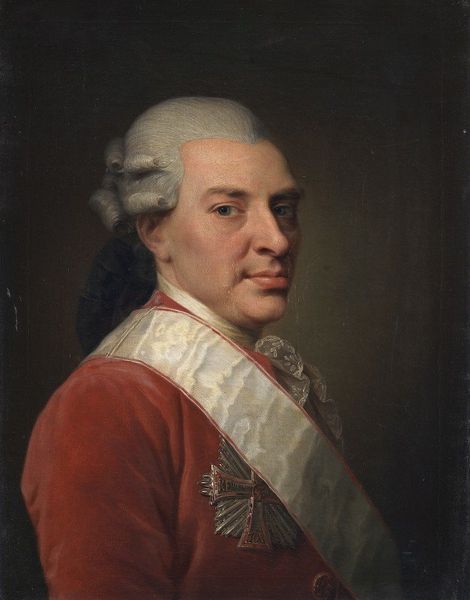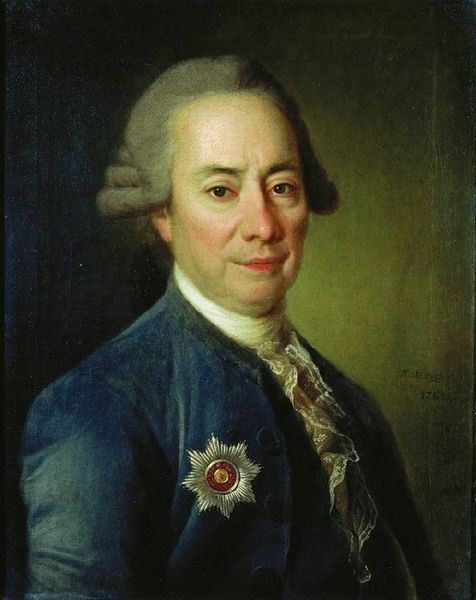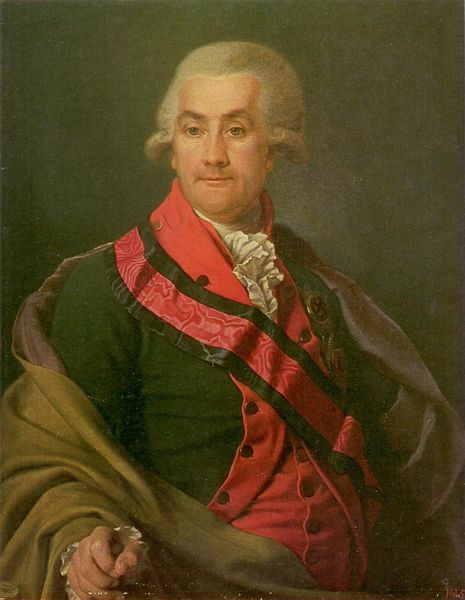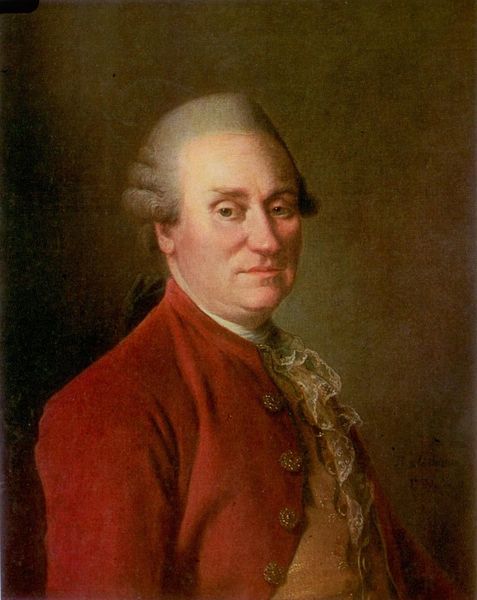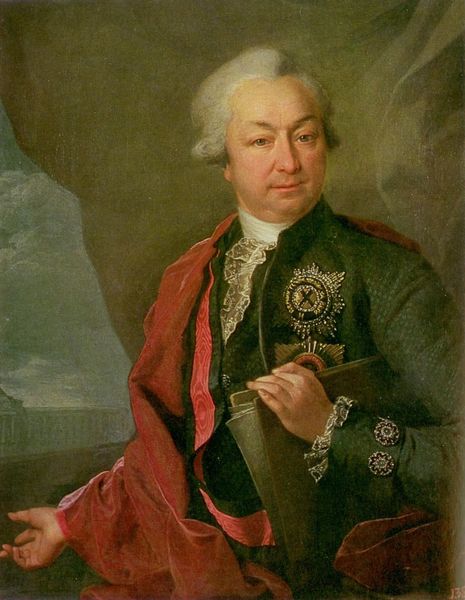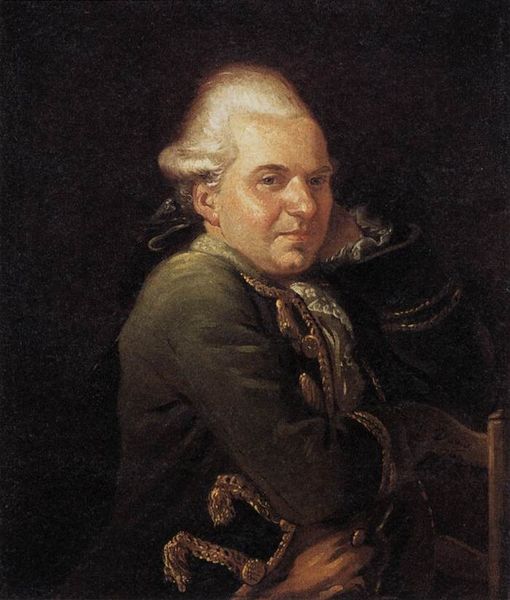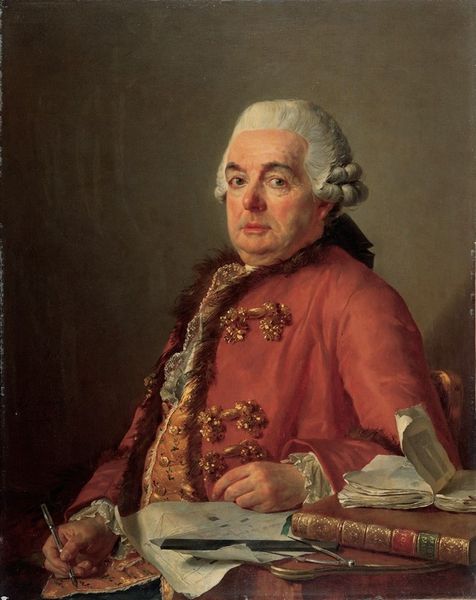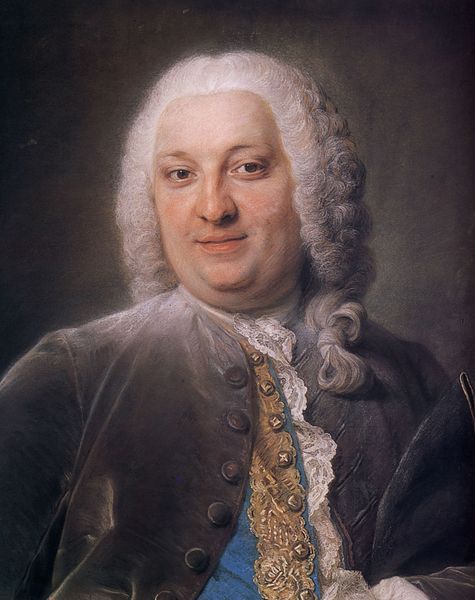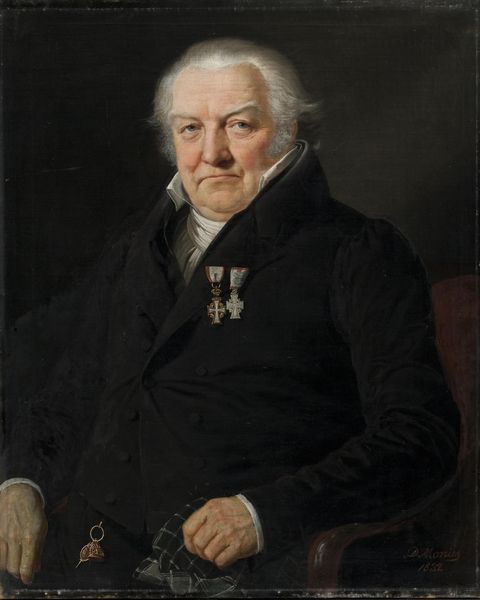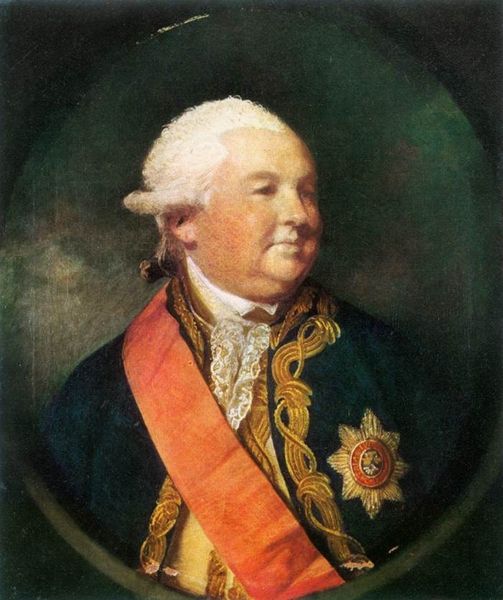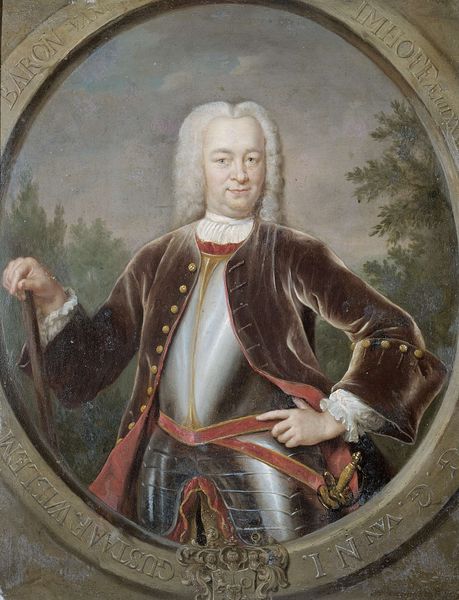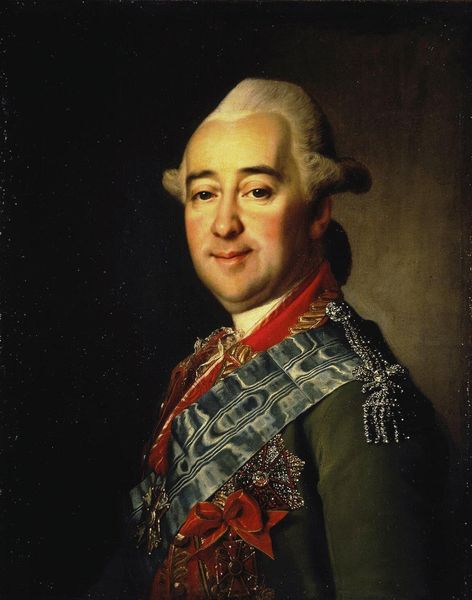
Copyright: Public domain
Curator: Looking at this portrait by Dmitry Levitzky, created around 1775, one is immediately struck by the sitter’s rather knowing smile. What are your initial impressions? Editor: He appears rather pleased with himself. There’s a rosy quality to the face, contrasting nicely with the cool, white wig. The whole thing feels meticulously arranged to project an image of… importance. Curator: Exactly! Levitzky was a master of conveying status. His portraits often depicted prominent figures of the Russian Enlightenment. We don't know the sitter's identity for sure, but everything from the wig to the luxurious fabric suggests aristocracy. Note how the application of oil paint creates smooth transitions and a rich surface, fitting the expectation of wealth and high social status. Editor: It’s fascinating how Levitzky uses materiality to signal societal status. I'm drawn to consider the labor involved in the production of his clothing - lace trim around his neck must've required incredible time and craft. And consider where the fabrics come from! These paintings weren't created in a vacuum, it is important to think of them within the landscape of trade and consumption that would shape people’s world-views at that moment. Curator: That's right! These are also indicators of broader European cultural influences. Think about the patronage systems at the time. Levitzky relied on commissions from the elite, thus playing a part in perpetuating their image. The museum functions in much the same way. Who chooses which "unknown" portraits end up displayed, and why? Editor: And what power does the painting gain once inside an institution? Does its value increase solely due to context and display, altering its reading and reception? Curator: Precisely. By understanding these paintings through the lenses of history, societal role, artistic choices and production, we appreciate the complex relationships that they participated in and reflect upon the cultural forces that have preserved their relevance today. Editor: Absolutely. Considering those layers makes engaging with the artwork so much more profound, adding new layers of consideration of craft and of place to its existence.
Comments
No comments
Be the first to comment and join the conversation on the ultimate creative platform.
